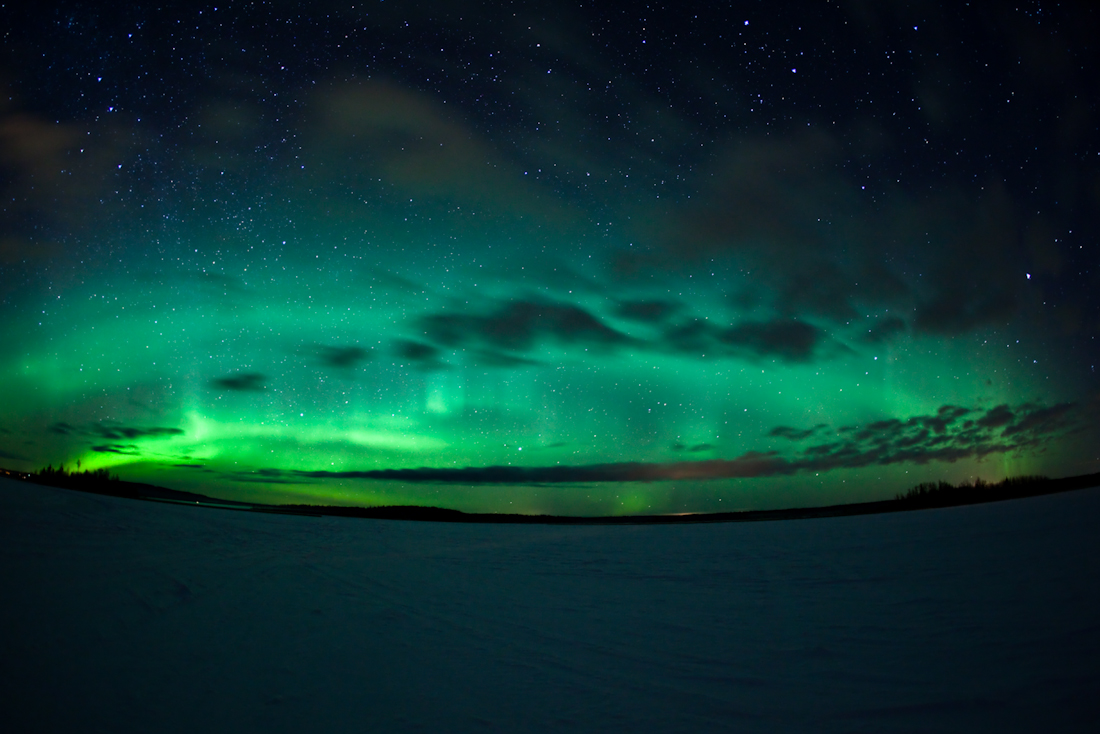
Excerpt from mashable.com
The northern tier of the U.S., from Washington State to Michigan, as
well as parts of Europe and Asia saw the colorful phenomenon on Monday
night, just as the G4 solar storm was hitting Earth’s magnetic field.
The solar storm intensified on Tuesday, and if it remains at a high
intensity through much of the night, which scientists say is possible,
locations all the way south to Washington, D.C. may have a decent chance
at catching the lights.
Mostly clear skies from the Upper Midwest into the Ohio Valley and
eastward to the Mid-Atlantic will aid in creating favorable viewing
conditions. For the best chance to see the Northern Lights, formally
known as the Aurora Borealis, try to get away from any light pollution
in large cities or streetlights in rural areas, and look north,
particularly in the wee hours of the morning.
If you’re reluctant to head out into the cold air at 2 a.m., there
are some Internet resources to check first that will help you determine
how high a chance there is that you’ll see the Aurora.
There is no precise way to predict the Aurora (even the forecast for
the geomagnetic storm was off in both intensity and timing), but
real-time monitoring, plus Twitter, can provide a good idea of how
likely it is that a widespread event is occurring.
The Space Weather Prediction Center, which is part of the National
Oceanic and Atmospheric Administration (NOAA), has a variety of tracking
tools on its website.
One index to check out is the Planetary Kp-Index, which measures the magnitude of geomagnetic storms. NOAA also has realtime maps of Aurora probabilities and short-term model forecasts.
So far, the Kp Index has peaked at an eight on a nine-point scale,
although as of 6 p.m. ET it had declined to a seven. Those readings are
typically associated with Northern Lights displays as far south as
Northern California, as far east to Delaware, and points northward.
However, NOAA scientists told the media on Tuesday that solar storms of
this intensity can result in Aurora displays that reach all the way into
the Southeast, including states such as Alabama and Tennessee.

Reports
of a vivid Aurora display on Tuesday night have been coming in from
Northern Europe, with more to come as night falls across the U.S. and
Canada.
The geomagnetic storm, which is just one notch below the highest
category of solar storm, began at about 10 a.m. ET on Tuesday, according
to the Space Weather Prediction Center. The geomagnetic storm is the
result of a pair of coronal mass ejections, or CMEs, that left the Sun
on March 15 and are now interacting with Earth’s atmosphere and
geomagnetic field.
In a press briefing on Tuesday, NOAA scientists said the two CMEs may
have unexpectedly combined as they sped toward Earth, which could
explain why the geomagnetic storm has been so strong.
Coronal mass ejections, which are essentially magnetic clouds ejected
at high velocity from the sun, can affect the electricity grid, radio
transmissions and GPS signals, among other things, when they interact
with the planet’s magnetic field. According to NOAA, there had not been
any reported abnormalities in the U.S. power grid as of noon eastern
time on Tuesday.
In the Southern Hemisphere, unusually vivid displays of the Southern
Lights, or Aurora Australis, also were observed on Monday, and may occur
again Tuesday.
Source Article from http://feedproxy.google.com/~r/AscensionEarth2012/~3/rnsQaMBwlEg/rare-severe-geomagnetic-storm-enables.html
Rare & severe geomagnetic storm enables Aurora Borealis to be seen from U.S. tonight
No comments:
Post a Comment